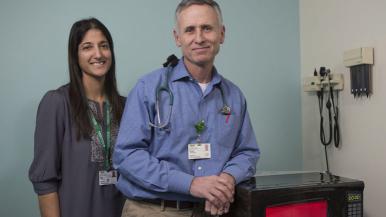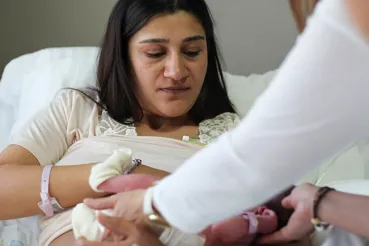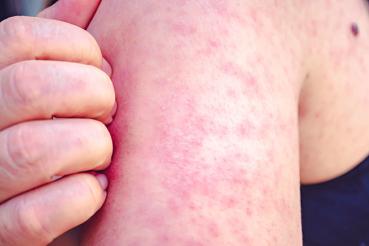Kyran Quinlan, MD, MPH, a pediatrician at Rush University Medical Center, has focused his research and advocacy on making microwave ovens safer to protect young children from severe scalds. He and his team’s efforts over the last 15 years recently led to a change in the national standard for microwave ovens. To meet the new Underwriters Laboratories standard, microwave makers will be required to design and produce microwaves with “child-resistant” doors, making them more difficult for young children to open.
Quinlan and his team shared these results in an abstract that was chosen as the Program Description Abstract of the Year during the annual conference of the Injury Free Coalition for Kids, held in December in Fort Lauderdale, Florida. Quinlan, a professor and the director of the division of general pediatrics at Rush, shared this honor with coauthors Gina Lowell, MD, MPH, an assistant professor of pediatrics at Rush, and Marla Robinson, OTRL, and Lawrence Gottlieb, MD, from the burn unit at University of Chicago Medicine.
“Every year at the Injury Free Conference, I am inspired by all the amazing work to prevent child injury being done at sites all around the country, so it was a real honor to for us to receive this award,” Quinlan said.
Team worked with manufacturers, licensing groups to increase child safety
Research by Quinlan’s team using National Electronic Injury Surveillance System data showed that during the last decade, an estimated 7,000 children were treated in U.S. emergency departments for burns suffered when they opened microwave doors and spilled the heated contents.
Part of Quinlan’s work included focused research presented at multiple national meetings. He worked with the child product safety advocacy group Kids in Danger to enlist college engineering students to design child-resistant microwave doors to demonstrate their feasibility and created a short video to put a face to the statistics.
Quinlan’s abstract was selected from those submitted across the country and judged on variety of subjects. These included whether the research topic identified a new area of study and/or addressed the topic in a novel and unique manner, and the scientific validity of the research methodology, among others.
“It takes determination and perseverance to do work that makes that kind of difference,” said Barbara Barlow, MD, the founder and executive director of the Injury Free Coalition for Kids.
“This project showed that persistence and working with manufacturers and licensing groups can yield a safer microwave oven,” said Marlene Melzer Lange, MD, the Injury Free Coalition for Kids Scientific Publication’s Committee chair. “The advocacy of Dr. Quinlan and his team will prevent many microwave scald burns via improvements of microwave design.”
The Injury Free Coalition for Kids is a group of 45 Level I US pediatric trauma centers using local trauma data to drive and evaluate the effectiveness of prevention programs to protect children. Modeled after the pioneering work of Dr. Barlow in Harlem, NY, the coalition was formed in 1995 to apply her successful model to areas served by trauma centers across the country.




